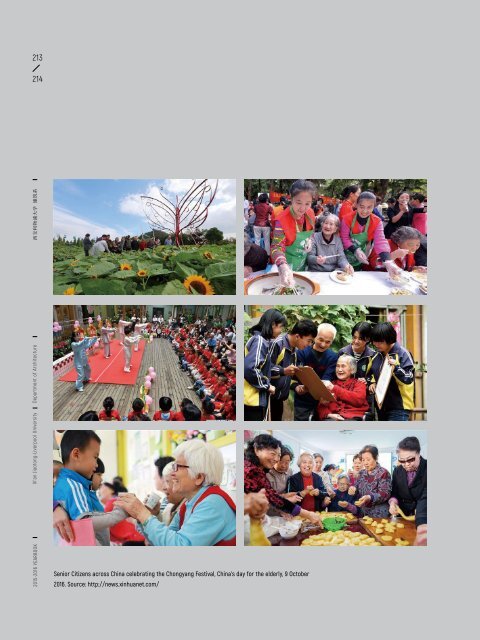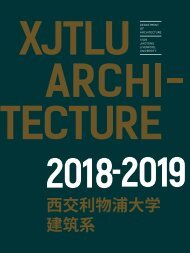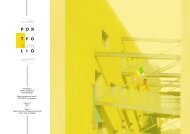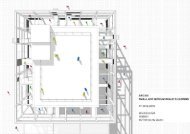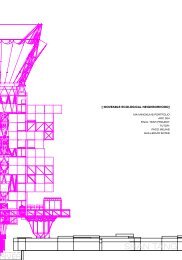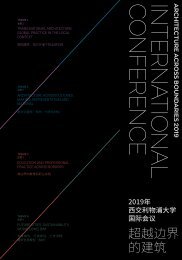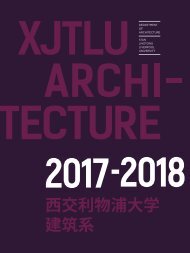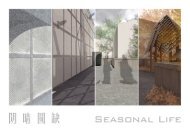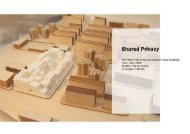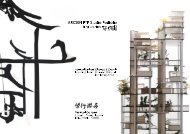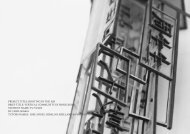YEARBOOK 2015 - 2016 | XJTLU DEPARTMENT OF ARCHITECTURE
The third edition of the yearbook of the Department of Architecture at Xi'an Jiaotong-Liverpool University presents student works created during the academic year 2015 - 2016. The yearbook exemplifies the new model for Chinese architectural education for which the department was commended by the Royal Institute of British Architects (RIBA) in their validation report for the Bachelor in Architecture. It is thus also a showcase of the creative culture that has guided our students in taking first steps to successful international careers as responsible and creative architectural designers.
The third edition of the yearbook of the Department of Architecture at Xi'an Jiaotong-Liverpool University presents student works created during the academic year 2015 - 2016. The yearbook exemplifies the new model for Chinese architectural education for which the department was commended by the Royal Institute of British Architects (RIBA) in their validation report for the Bachelor in Architecture. It is thus also a showcase of the creative culture that has guided our students in taking first steps to successful international careers as responsible and creative architectural designers.
Create successful ePaper yourself
Turn your PDF publications into a flip-book with our unique Google optimized e-Paper software.
213<br />
214<br />
RESEARCH ON AN IDEAL<br />
MODEL <strong>OF</strong> COMMUNITY<br />
HOUSING FOR THE ELDERLY<br />
COMMUNITY IN SUZHOU<br />
<strong>2015</strong>-<strong>2016</strong> <strong>YEARBOOK</strong> Xi’an Jiaotong-Liverpool University Department of Architecture 西 交 利 物 浦 大 学 建 筑 系<br />
Senior Citizens across China celebrating the Chongyang Festival, China's day for the elderly, 9 October<br />
<strong>2016</strong>. Source: http://news.xinhuanet.com/<br />
Qian Lin<br />
PhD Candidate<br />
Department of Architecture<br />
Xi’an Jiaotong Liverpool University<br />
(<strong>XJTLU</strong>)<br />
With the population of elderly people increasing, ageing is becoming an<br />
important social issue in China. The “One Child Policy” of 1980s limited<br />
the number of children born and has resulted in a 4-2-1 structural morphology<br />
across three generations with a nuclear family typically defined<br />
by 4 grandparents, a couple, and one child. Due to the pressure from<br />
contemporary fast-paced life and increased opportunities, the younger<br />
generation born in the 1980s and 1990s no longer live a traditional way<br />
of life. Regardless of whether they choose to marry late, or establish<br />
a Dink family, their lifestyles are contributing to an increased elderly<br />
demographic. According to statistics, by 2030 the elderly population<br />
of China will reach 400 million, surpassing that of Japan. And by then<br />
China will have the highest level of ageing in the world. But currently,<br />
design for the elderly community in China is still relatively backward,<br />
which may hardly keep pace with the demand of ever-growing population<br />
of the elderly.<br />
Old people have their own way of life and daily activities, so it is imperative<br />
that design for the elderly community first satisfy their needs. In<br />
China there are generally three types of elderly care: institutional care;<br />
community care; and home-based care. Institutional care is operated by<br />
either governments or private agencies, and includes facilities such as<br />
nursing homes or assisted living facilities, where the elderly are housed<br />
together to receive services. Community care mainly refers to businesses<br />
that provide services to residents in their communities, including<br />
food, home maintenance, and home care, facilitating the daily life of the<br />
elderly people. It also includes the provision of recreational facilities,<br />
such as card rooms, dancing rooms, and sports halls, where they can enjoy<br />
leisure time together. And finally home-based care generally means<br />
that elderly people live at home with their children. Given Chinese culture<br />
and customs, most Chinese people prefer home-based care, however<br />
this option is becoming increasingly less plausible. As such, this research<br />
seeks to propose ideal models of community housing which will cater for<br />
the elderly community in Suzhou.<br />
Research


